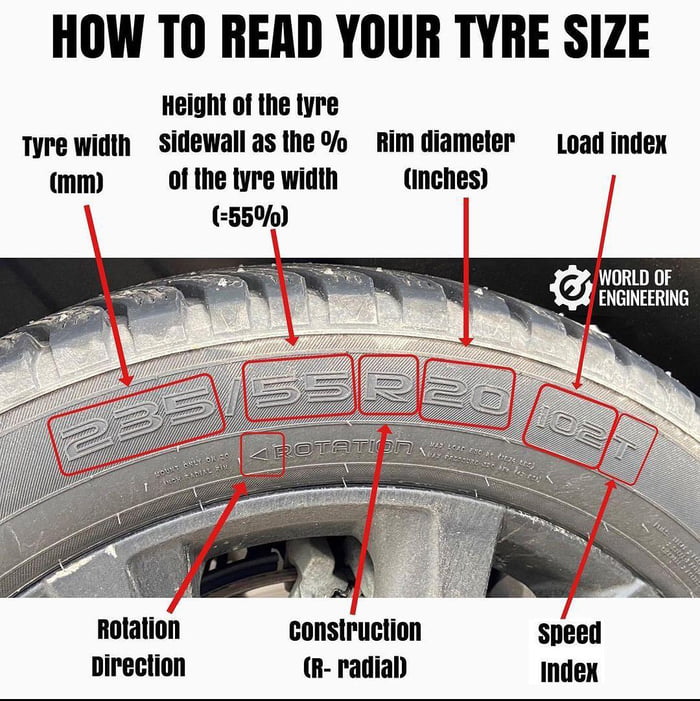Maintaining proper tire inflation is relatively simple and essential to the overall tire performance of your vehicle. A properly inflated tire will provide longer life, quicker steering response, better fuel efficiency and a smoother ride than an improperly inflated tire. Both underinflation and overinflation can cause headaches like premature treadwear and possible tire failure. The best way to ensure you're getting the most out of your tires is to check your tire pressure on a monthly basis.
Knowing how to use a tire pressure gauge is very simple. Here’s how to check tire pressure and refill your tires.
Items You Need When Checking Tire Pressure
Tire pressure gauge
Air compressor
Pen and paper
Your tire pressure gauge can be digital or standard. Auto parts stores typically carry both. Many auto parts stores sell portable air compressors that run from your car battery or 12v power port. Alternatively, you can use the air compressor found at most gas stations. They usually cost $0.50 or $1.00 to use.
Vehicle manufacturers specify PSI – literally “pounds per square inch” of pressure – assuming tires are cold. Tires are considered cold when the vehicle has been parked for three hours or more, or if the vehicle has been driven less than a mile (1.6 km) at moderate speed. PSI is the unit your pressure gauge uses to provide readings.
Look on the driver’s side door jamb or your owner’s manual to find the recommended cold tire PSI for your front and rear tires. If you cannot find it, you should consult your vehicle dealer, manufacturer, or a qualified tire professional.
If your front and rear tires require different pressure levels, write down the correct PSI for each to avoid getting confused as you move around your vehicle checking tire pressure.
Remove the valve cap from one of your tires. Then place the pressure gauge on the valve stem and press down hard enough so the hiss sound disappears and your gauge provides a reading. With a standard gauge, the air pressure will push a small bar out from the bottom of the gauge. Measurement units are etched into the bar. A digital gauge will show you the reading on a screen.
Write down the reading and repeat this process for all four tires.
Use an air compressor to refill any tires with low pressure. Many air compressors are different, so read directions carefully to be sure you’re using it correctly.
If you’re using the air compressor at a gas station, be sure to park so that the hose will reach all four tires. Insert change into the machine until you hear the motor running. Fill each tire by placing the end of the hose over the valve stem and pressing on the lever.
Using a gas station air compressor means your tires might be “hot. ” If it is necessary to adjust inflation pressure when tires are “hot”, set their pressure to 4 psi (14 kPa) above the recommended cold inflation pressure. Recheck the inflation pressure when the tires are cold.
” If it is necessary to adjust inflation pressure when tires are “hot”, set their pressure to 4 psi (14 kPa) above the recommended cold inflation pressure. Recheck the inflation pressure when the tires are cold.
After filling your tires, use the gauge to check pressure again. At this point, it’s ok if you overfilled the tires because you can always let some air back out. Never drive on overinflated tires. Overinflation can result in decreased traction, premature wear, and decreased impact absorption.
Make the above procedure a monthly ritual. Regularly checking your tire pressure is the best way to ensure your tires never dip far below the optimal PSI.
Accuracy matters and you should keep that in mind when choosing a gauge. For just a few dollars, you can find a quality, accurate tire pressure gauge that gives accurate readings. If you’re not sure which one to purchase, ask a professional technician which he or she prefers.
A digital tire pressure gauge will provide accurate readings, but don’t forget that it operates on a battery. If you think having to replace the battery will prevent you from using it, it’s best to go with a standard gauge.
It’s best to use your personal tire gauge versus those available attached to air hoses at service stations. Of all the pressure gauges out there, they’re the most likely to be weathered, and possibly inaccurate.
There’s never a good time for a flat. That’s why Bridgestone DriveGuard tires are masterfully engineered to keep you moving for up to 50 miles at speeds up to 50 MPH without disruption.
There’s never a good time for a flat. That’s why Bridgestone DriveGuard tires are masterfully engineered to keep you moving for up to 50 miles at speeds up to 50 MPH without disruption.
See Details Find Your Fit
 Make it a part of your monthly maintenance routine in a matter of minutes.
Make it a part of your monthly maintenance routine in a matter of minutes.Every editorial product is independently selected, though we may be compensated or receive an affiliate commission if you buy something through our links. Ratings and prices are accurate and items are in stock as of time of publication.
1 / 7
Driving on improperly-inflated tires can wear out the tread and cause steering problems. That’s why it’s important to check your tire pressure regularly.
Fortunately, checking tire pressure only requires two tools — a tire pressure gauge and an air compressor. Most gas stations have an air compressor so you only need to own one tool. The whole process is relatively quick, too. In a matter of minutes you’ve done a lot to ensure a safe and smooth ride.
Before you begin, make sure the car has been parked for three to four hours so you get an accurate reading from the gauge. If you drive to a gas station to use an air compressor, try to find one less than a mile away.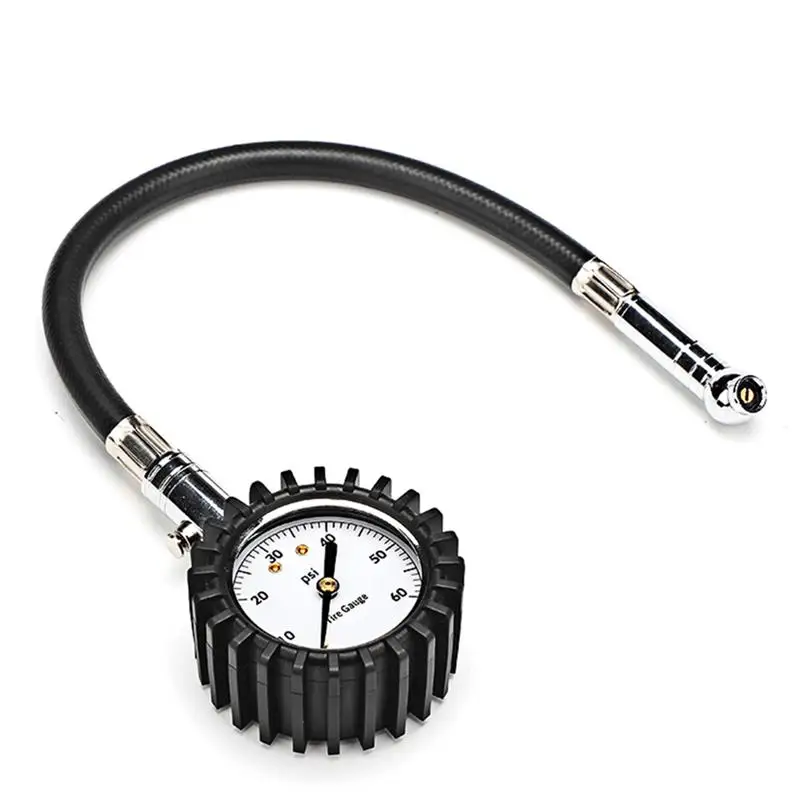
2 / 7
Veronica Graham
3 / 7
Veronica Graham
The driver’s side door jamb typically has a sticker with the recommended PSI (pounds per square inch) for the tires. Most manufacturers recommend 30 to 32 PSI for all four tires, although some cars will have different PSI recommendations for the front tires and back tires.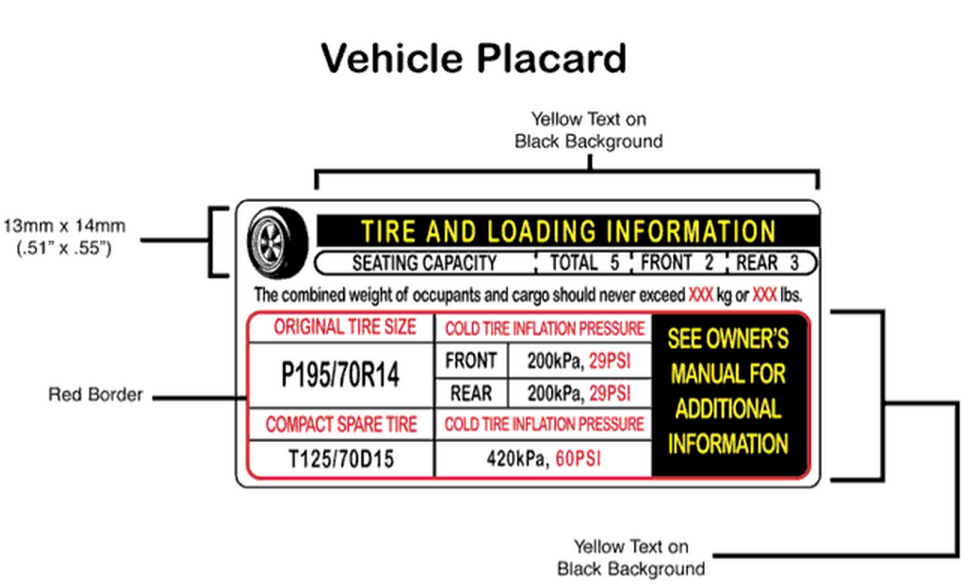 If you don’t see the recommended PSI on your door jamb, check your owner’s manual.
If you don’t see the recommended PSI on your door jamb, check your owner’s manual.
4 / 7
Veronica Graham
Unscrew the cap on the tire air valve and place it somewhere safe.
5 / 7
Veronica Graham
Press the gauge onto the tire air valve straight on, and press it hard. This creates a tight seal around the tire air valve so you don’t accidentally release air from the tire. You’ll hear a hissing sound if air is coming out. A small bar with numbered notches will pop out of the pencil gauge with the tire pressure reading.
6 / 7
Veronica Graham
Fill up the tire by pressing the air compressor nozzle onto the tire air valve in the same manner as the gauge — hard and straight-on to create a tight seal. Hold the nozzle onto the tire air valve for about 30 seconds to one minute, depending on how low the initial reading is. Repeat Step Three to get the new reading. Add or release air as needed to reach the recommended PSI.
Hold the nozzle onto the tire air valve for about 30 seconds to one minute, depending on how low the initial reading is. Repeat Step Three to get the new reading. Add or release air as needed to reach the recommended PSI.
7 / 7
Veronica Graham
Repeat Steps Three and Four on the three remaining tires.
Originally Published: April 16, 2020
Veronica Graham
Veronica Graham is a freelance writer in Arlington, Mass. Her work has appeared in The Washington Post and SheKnows. She's covered health, politics, high school football and everything in between. Graham enjoys learning about the world through a variety of lenses as a reporter.
Tire pressure significantly affects driving parameters: comfort, car handling, economy and safety. It is important to maintain the pressure recommended by the manufacturer and check it regularly. Let's figure out how to do it right.
It is important to maintain the pressure recommended by the manufacturer and check it regularly. Let's figure out how to do it right.
When driving on asphalt, incorrect tire pressure (both high and low) leads to a decrease in the contact patch with the road. An overinflated wheel clings to the surface only in the central part, which leads to its rapid wear. A poorly inflated tire, on the contrary, "sits" on the sidewalls, leaning on the shoulder areas of the tread and pushing the central part inward. Here's what it looks like:
Both under-inflation and over-inflation in tires create many problems for the driver.
1. Increased wear of the central part of the tire tread.
2. Reduced ride comfort, hardness of potholes and road bumps.
3. Increased load on the car's suspension due to reduced tire damping effect.
4. Risk of tire damage and herniation due to shock loading (getting into a pit or pothole).
5. Reduced control stability due to reduced contact patch.
1. Increased wear of the tread sidewalls (shoulder areas).
2. Severe deformation of the rubber when driving over bumps, which increases the risk of tire damage.
3. An increase in tire temperature, which threatens to delamination of the carcass and can lead to tire explosion at high speed.
4. Increased risk of hydroplaning on wet roads.
5. Risk of tire breaking.
6. Increased fuel consumption.
Reduced pressure hits the driver's pocket hard: a pressure drop of 20% (which is not uncommon: it is enough, for example, to deflate the wheels to 1.8 atmospheres instead of the manufacturer's prescribed 2.2) reduces tire life by 25-30% and increases fuel consumption fuel by 3%.
There is no universal tire pressure: it depends on the size of the tires, the characteristics of the car (primarily weight) and road conditions. Therefore, it is important to follow the factory recommendations, maintaining exactly the tire pressure that the engineers expected when designing the car.
Therefore, it is important to follow the factory recommendations, maintaining exactly the tire pressure that the engineers expected when designing the car.
The recommended pressure for your machine can be found in the operating instructions and on the sticker in the door frame. If, depending on the configuration, tires of several dimensions were installed on the car, then the pressure recommended for them may differ - look in the table for your exact wheel size. The manufacturer may prescribe an increase in tire pressure at the maximum load of the machine. For the spare tire (Spare tire), the required pressure is also indicated on a separate line - note that it is much higher than the standard one.
So, you have found the necessary pressure parameters, it remains to decipher them. In physics, pressure is measured in pascals, in real life - in anything: in bars, atmospheres, pounds-force, kilogram-force ... Drivers and tire workers usually use the term atmosphere, but such a unit is often absent on pressure gauges (pressure measuring devices) .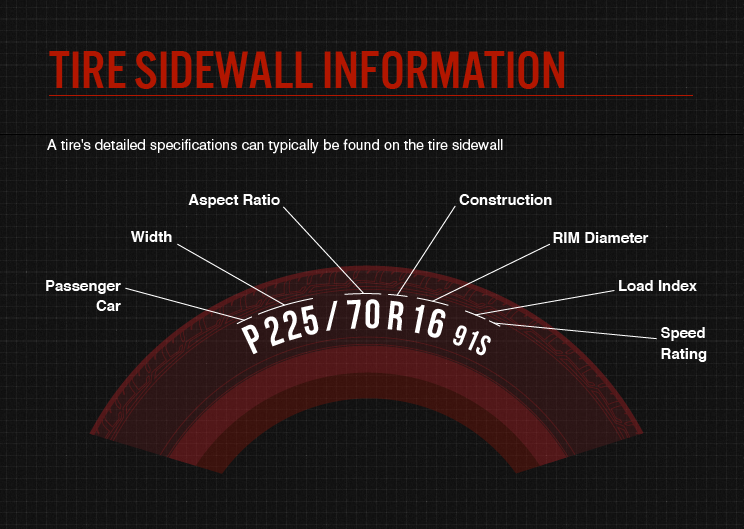 Let's clear up this confusion.
Let's clear up this confusion.
Atmosphere is a non-systemic unit of measurement, approximately equal to atmospheric pressure on the surface of the Earth. Since it has become widely used, it was necessary to somehow equate it with correct physical units. For simplicity, one atmosphere is considered equal to one bar, one kilogram-force and one hundred kilopascals.
In addition to the technical atmosphere (at), there is also the physical atmosphere (atm), which is slightly larger. Again, for convenience, they are considered equal. But all these assumptions introduce an error, so if you need accurate tire pressure, measure it correctly - in pascals or bars. Moreover, manufacturers usually indicate the pressure in these quantities.
Imperial pounds-force (aka PSI, “psy”), popular in the USA, is more difficult to translate, here you can’t do without a calculator. In the table, we have collected together all pressure units with exact values, and also approximately brought them to each other to simplify calculations:
 5 psi
5 psi | Pressure units | |||||
| Pascal | Bar | Technical atmosphere | Physical atmosphere | PSI | |
| 1 Pa | 1 N/m² | 10-5 | 10.197•10-6 | 9.8692•10-6 | 145.04•10-6 |
| 1 bar | 105 | 1x106 dynes/cm² | 1. | 0.98692 | 14.504 |
| 1 at | 98066.5 | 0.980665 | 1 kgf/cm² | 0.96784 | 14.223 |
| 1 bar | 101325 | 1.01325 | 1.033 | 1 bar | 14.696 |
| 1psi | 6894.76 | 68.948•10-3 | 70.307•10-3 | 68.046•10-3 | 1lbf/in² |
It is advisable to check tire pressure daily, before driving.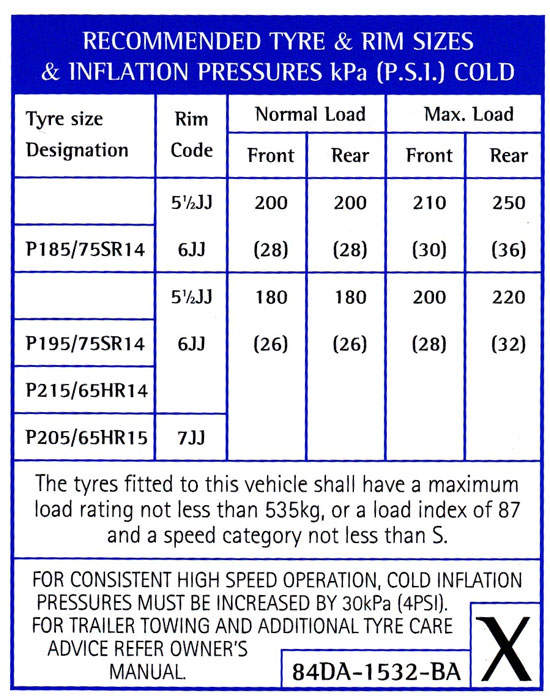 But this is only possible with a very measured rhythm of life. In reality, checking at least once a month is already an excellent indicator for the average driver. But before traveling a long distance, checking the pressure and visual inspection of tires and rims should be done in any case.
But this is only possible with a very measured rhythm of life. In reality, checking at least once a month is already an excellent indicator for the average driver. But before traveling a long distance, checking the pressure and visual inspection of tires and rims should be done in any case.
It is necessary to measure the pressure in cold tires, that is, before driving. During driving, the tires heat up, which increases the pressure by about 10%. Therefore, never release supposedly excess air from hot tires: after cooling, the pressure will be below normal. If you had to inflate a hot tire during a trip, inflate it 10% more than the nominal value, and check the pressure again when the wheels have cooled down - no earlier than 3 hours after stopping.
Always check the pressure in all tires. Different tire pressures seriously affect handling and can cause the car to pull to the side. Do not forget about the "spare tire": it should always be inflated in case of an unexpected wheel change on the road.
For long-term driving at high speeds (more than 160 km/h), car manufacturers advise increasing tire pressure by 0.2-0.4 bar from the recommended value. This will slightly improve the handling of the car, although it will negatively affect comfort. But such advice is relevant for driving on high-speed autobahns, and not for everyday urban use, especially in Russia.
Before a long trip on a dirt road or a road with a muddy surface (mud, snow), it is reasonable, on the contrary, to reduce the pressure in the tires - this will improve the grip. In summer, it is worth limiting yourself to reducing pressure by 5-10% of the nominal value, and in winter - by 10-15%.
The pressure in low-profile tires (especially non-standard sizes) must be monitored especially carefully. Low profile tires have two features: a low sidewall (profile) height and a large rim diameter. If the tire has the correct air pressure, only the tread is in contact with the road. Low pressure causes the sidewall of the tire to bend, causing it to touch the roadway and wear out quickly, up to complete abrasion. And punching a low-profile tire in a pit at low pressure is much easier.
Low pressure causes the sidewall of the tire to bend, causing it to touch the roadway and wear out quickly, up to complete abrasion. And punching a low-profile tire in a pit at low pressure is much easier.
When inflating low profile tires, you need to focus on the pressure indicated for a full load of the machine and the maximum allowable pressure for a particular tire. It is indicated on the sidewall, next to the inscription max pressure, in one of the accepted units of measurement: kilopascals (KPA), bars (BAR) or pounds-force (PSI).
Modern cars equipped with sensors in tires and a TPMS (Tire pressure monitoring system) pressure monitoring system themselves monitor the pressure in each wheel and signal deviations, which is very convenient. If there is no such system in the car from the factory, you can install it yourself.
But the old manual measurement methods are still in use. Firstly, any modern car compressor is equipped with a pressure gauge: by inflating the wheel, you immediately control the pressure.
Secondly, there are compact hand-held pressure gauges: no need to unpack and connect the pump to check the pressure, and the measurement accuracy of such a pressure gauge is usually higher than that of a built-in compressor instrument. There are also modern digital pressure gauges on sale that allow you to switch pressure units on the fly and save readings in memory, which is very convenient.
Finally, if you want to entrust all maintenance of the car to professionals, you can use the services of tire fitting. In Hyperauto car services equipped with tire fitting areas, experienced mechanics will accurately measure and correct tire pressure, assess the condition of the tire tread and perform any other work with the wheels.
Photo: Shutterstock
www.adv.rbc.ru
See also
Tires are the only vehicle element that is in constant contact with the road. One of the main indicators of their serviceability is pressure. It affects not only fuel efficiency, but also safety.
It affects not only fuel efficiency, but also safety.
As a rule, car manufacturers recommend maintaining tire pressures between 2.0 and 2.8 atm. But in practice there are situations when it is necessary to deviate from this norm.
www.adv.rbc.ru
Tire pressure should be checked at least once a month, there are several ways to do this. We understand why it is so important to observe the optimal pressure indicator and what it affects.
In this story:
Tire pressure is the resistance with which air "presses" on the inner area of the rubber. Properly inflated tires will last longer, give you better ride quality and improve your driving safety. If the pressure in the tires is too low or they are pumped over, then the car owner runs the risk of facing a number of problems: from buying new tires to the threat of an accident.
If the pressure in the tires is too low or they are pumped over, then the car owner runs the risk of facing a number of problems: from buying new tires to the threat of an accident.
Properly inflated tires will last longer (Photo: Global Look Press)
Under-inflated tires are tires that are below the recommended pressure. In this case, the contact patch of rubber with the road increases, which leads to increased friction or rolling resistance. A worn out outer edge of the tread can visually give out such a problem.
Increased friction with the road can cause the tire to overheat, slip and even burst. In addition, low tire pressure leads:

When tires are over-inflated, that is, above the manufacturer's recommended rate, the contact patch decreases. As a result, the main friction with the road is taken over by the central part of the tire.
Excessive tire pressure leads to excessive sensitivity to road irregularities and the risk of tire damage, even destruction. Inflated tires also lead to the following:
Auto expert, international master of sports in motorsport Tatyana Eliseeva comments
For flat tires:

For overinflated tires:
Excessive tire pressure leads to excessive sensitivity to road irregularities and the risk of tire damage (Photo: Shutterstock)
The manufacturer sets its own optimal tire pressure for each car model. This indicator depends on the mass of the car, the speed of operation, the number of passengers (partial or full boarding), as well as the load on the trunk [1].
The recommended tire pressure can be found in the vehicle owner's manual or on one of the plates/stickers in the passenger compartment. They can be:
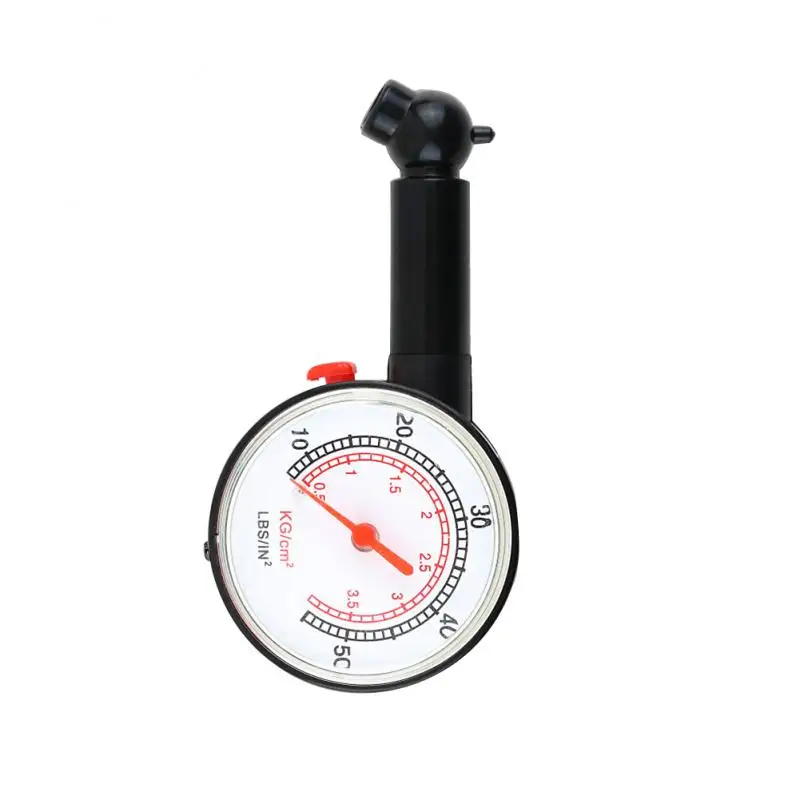
Tire pressure is measured in several units. In Russia, they usually indicate in kg / cm 2 (or atmospheres) and bars (bar). These two indicators are almost equal, which is why they are often used as synonyms:
Foreign models often use pounds per square inch (pound per square inch), or psi:
For convenience, car manufacturers can indicate pressure in two units at once - bar and psi. Thus, the need to independently calculate according to the formulas disappears. Otherwise, you can do this in one of the online calculators or check the table of popular values.
| 2.0 bar | 2.1 bar | 2.2 bar | 2. 3 bar 3 bar | 2.4 bar | 2.5 bar | 2.6 bar | 2.7 bar | 2.8 bar |
| 29psi | 30psi | 32 psi | 33 psi | 35 psi | 36 psi | 38 psi | 39 psi | 41 psi |
Temperature has a significant effect on tire pressure: when it drops, the pressure in the wheels decreases with it. When the temperature drops by 10 °C, the tire deflates by an average of 0.07–0.14 bar or 1 to 2 psi [2].
Temperature has a significant effect on tire pressure (Photo: Shutterstock)
Summer tires typically use manufacturer's recommended readings. But in winter, it is advised to add about 0.2 bar to these figures [3].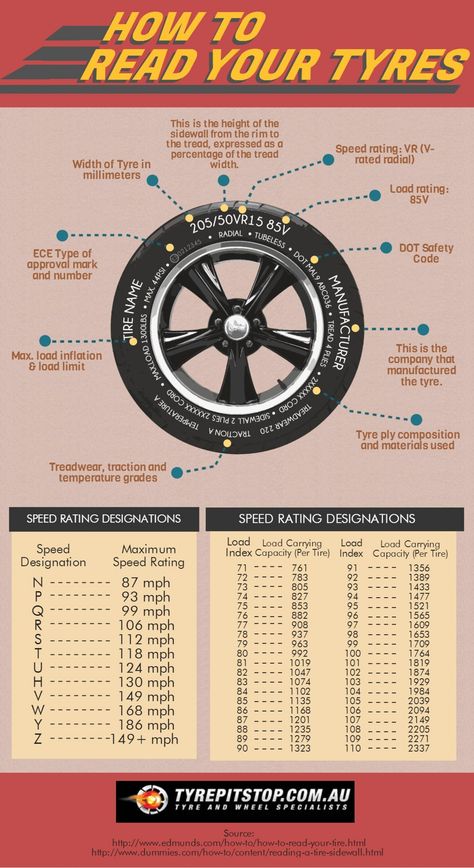
Experts also recommend checking and correcting tire pressure at outside temperature. In the cold season, swapping is best done not in a warm garage, but on the street. In summer, before such a manipulation, you should make sure that some of the wheels of the car were not under the scorching sun, while others were in the shade.
Sometimes the tire pressure needs to be adjusted according to the situation. For example, when the machine is fully loaded or a trailer is towed. For such cases, automakers, as a rule, separately indicate the optimal pressure.
But there are moments that fall into the category of extreme and non-standard (especially if before that the car most often drove around the city). Automotive expert Tatyana Eliseeva analyzed the most common of them.
Leads to heating of the wheels, especially in summer, and therefore it is necessary to follow the manufacturer's recommendations before such a trip.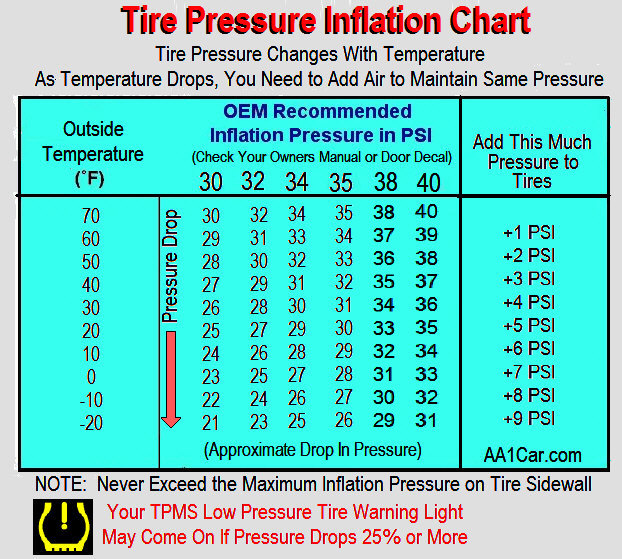 We do not know what we will meet: patched road repairs or heavy rain. After all, for each of these situations, the recommendations will be opposite. Athletes can play with pressure when track conditions are known and engineers can always change the settings. For a long journey, the layman just needs to choose the average.
We do not know what we will meet: patched road repairs or heavy rain. After all, for each of these situations, the recommendations will be opposite. Athletes can play with pressure when track conditions are known and engineers can always change the settings. For a long journey, the layman just needs to choose the average.
Tires must be bled off, especially on sand. The question is for how much? You can bleed up to 0.7 atm, but a not very experienced motorist can slip the wheels with an inaccurate movement, and if the driver turns the steering wheel sharply (for example, trying to catch on the edge of the track), then the tire can come off the disk. And such cases occur regularly.
At near-zero temperatures on packed snow, ice or sludge for new wheels (Velcro or studded) it is better to pump the wheels a little so that water and sludge are squeezed out of the central zone of the contact patch and the tread is better worked.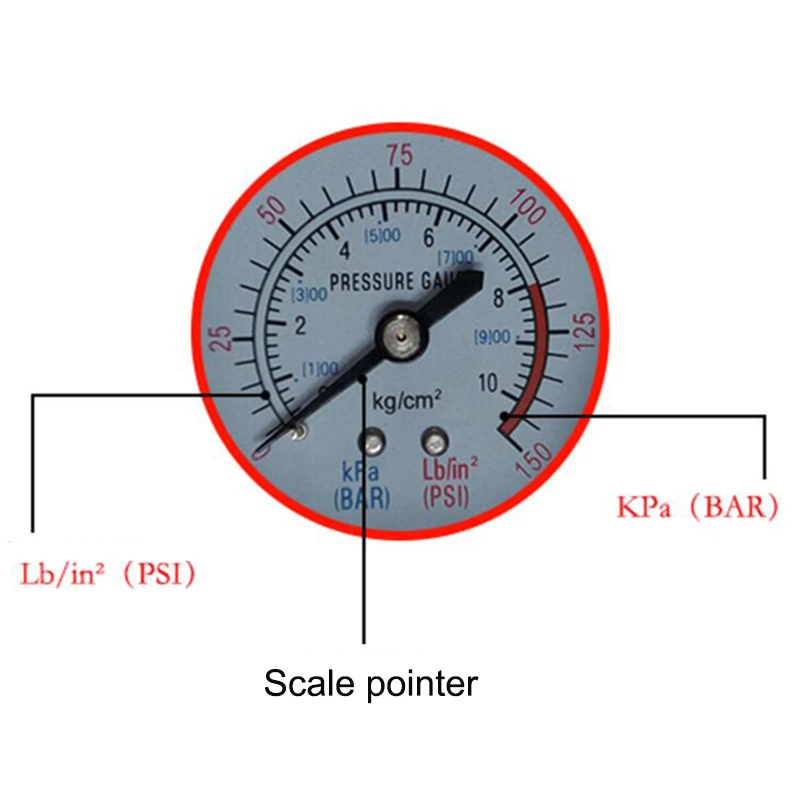 The wheel must be cleared for the tread to work. When it is clogged with snow, the braking distance and traction deteriorate greatly.
The wheel must be cleared for the tread to work. When it is clogged with snow, the braking distance and traction deteriorate greatly.
If the car has worn wheels, but with an acceptable tread depth for winter tires (4 mm), then you should not hope for the correct operation of the tread. Such a low checker no longer pushes the snow. In this case, it is necessary to reduce the pressure in the wheel, thereby increasing the same contact patch.
Photo: Global Look Press
On a country road, the weight of the machine will be an important factor. In this case, we select the pressure according to the load - specific indicators must be viewed on the central pillar of the body. There you will see something like the following recommendation: the more the car is loaded, the higher the pressure in the rear wheels should be.
But a badly broken road can lead to herniations, ruptures and tire damage. Therefore, if we increase the pressure, then we drive on a bad road as calmly and measuredly as possible. Or we slightly deviate from the manufacturer's recommendations and raise the pressure not as much as the manufacturer recommends.
Or we slightly deviate from the manufacturer's recommendations and raise the pressure not as much as the manufacturer recommends.
The main factor in changing the behavior of the wheel is not the pressure drop at altitude, but the presence of a large number of tight turns and long braking. The tire will heat up not only from the loads, but also from the operation of the brake mechanisms. Therefore, the idea that due to low pressure it is necessary to increase the pressure in the tires is wrong, because the temperature of the wheel has a much greater influence in this case.
The recommended pressure is always given when the tires are cold. This means that the vehicle has not been driven for three hours or has traveled less than 1 mile (or one mile).
There are two ways to check tire pressure: on your own or at a workshop. In the first case, it is enough to use a public pump at a gas station or purchase a pressure gauge. This tire pressure measuring device comes in three types:
This tire pressure measuring device comes in three types:
Another option is to install special pressure control caps on each nipple. Such a gadget works as follows: the upper part of the cap is transparent and, depending on the level of pressure, an indicator of three colors appears in it. Green - the pressure is normal, yellow - the tire is flat, red - the pressure has exceeded the norm.
Photo: Shutterstock
The easiest way to monitor tire pressure is with the automatic TPMS (Tire Pressure Monitor System). Today it is installed on almost all models, and in some countries its presence is a prerequisite for releasing a car from the assembly line.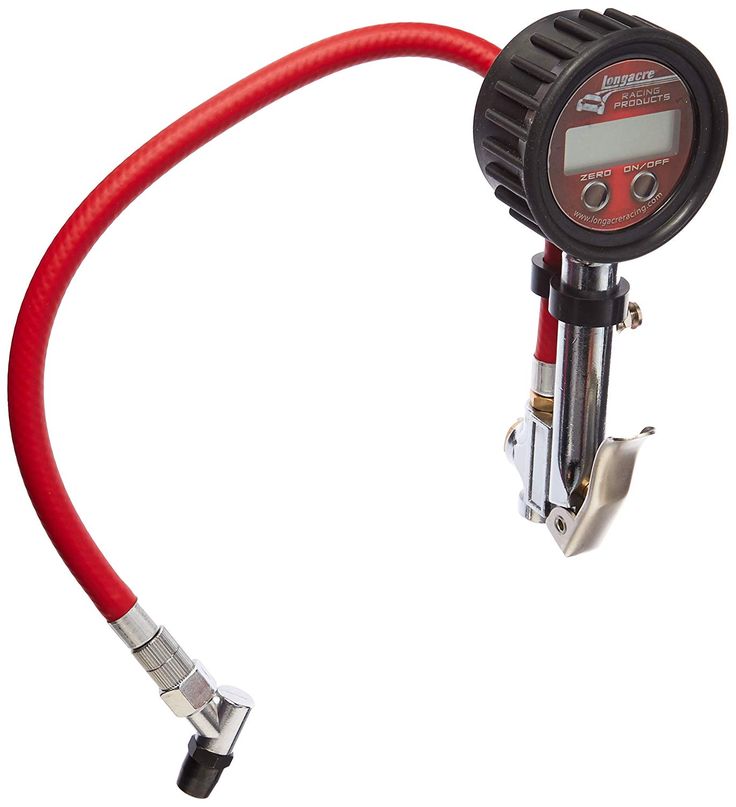
In these systems, the electronics automatically detect changes in the tire, and if the pressure drops below the recommended value, a warning signal lights up on the on-board computer screen.
There are two types of TPMS:
Car manufacturers recommend checking tire pressure every two weeks, but at least once a month. Indeed, even under ideal conditions (for example, the car is idle for a long time), the wheels lose approximately 0.069bar, or 1 psi, per month [4].
The pressure should be monitored before and after a long trip, during a sudden change in temperature (for example, during the first frost or warming), and also after changing tires or driving with a load.